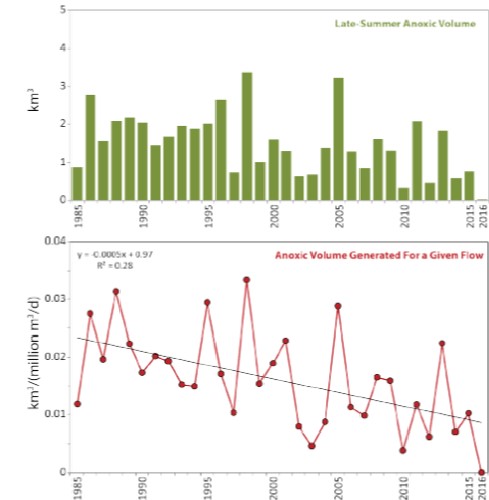Above-average dead zone predicted for Chesapeake Bay
Spring nutrient loads from Susquehanna River expected to affect summer water quality

Scientists predict the Chesapeake Bay will see a slightly larger-than-average dead zone this summer, due to above-average nutrient pollution flowing into the estuary from the Susquehanna River this spring.
Blue crabs, underwater grasses and other aquatic life rely on dissolved oxygen to survive. When nutrient-fueled algae blooms die and decompose, the resulting areas of little to no oxygen, known as dead zones, can suffocate underwater plants and animals. The 2017 forecast predicts a mid-summer hypoxic, or low-oxygen, zone of 1.89 cubic miles—slightly above the 30-year average of 1.74 cubic miles. The anoxic, or no-oxygen, zone is expected to reach 0.35 cubic miles in early summer and grow to 0.49 cubic miles by late summer.
This forecast, funded by the National Ocean and Atmospheric Administration, is based on models developed at the University of Maryland Center for Environmental Science and the University of Michigan and relies on nutrient load estimates from the U.S. Geological Survey. This spring, 81.4 million pounds of nitrogen flowed into the Chesapeake Bay from the Susquehanna River, slightly higher than the long-term average.

Over the next several months, researchers with the Maryland Department of Natural Resources and the Virginia Department of Environmental Quality will monitor oxygen levels in the Bay, resulting in a final measurement of the Bay’s dead zone later this year.
Learn more about the predicted dead zone size, or learn about how scientists measure oxygen in the Bay.

Comments
There are no comments.
Thank you!
Your comment has been received. Before it can be published, the comment will be reviewed by our team to ensure it adheres with our rules of engagement.
Back to recent stories